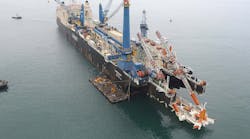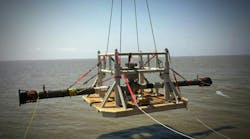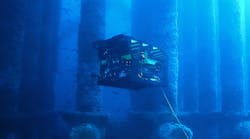Offshore staff
CONSTANTA, Romania – GSP Offshore’s DP-2 vessel GSP Prince is providing survey services and support for the proposed South Stream gas pipeline through the Black Sea for Russian engineering company PeterGas LLC.
The vessel has covered around half of the 900-km (559-mi) long route, most in water depths of more than 2,000 m (6,562 ft).
Onboard personnel took 35 minutes to record an underwater sound velocity profile of a 1,730-m (5,676-ft) deep section. According to GSP Offshore, this beats the previous record for sound velocity profiling of a water column, measuring 1,563 m (5,128 ft) which had been set by the National Data Buoy Center in association with the U.S. National Oceanic and Atmospheric Administration.
South Stream survey operations include exploration of the bottom sections and of the subsea strata using a Hugin AUV.
GSP Prince is equipped for fast recording of underwater sound velocity thanks to its high-speed UnderwaySV winch, developed by Oceanscience (USA), and the RapidSV underwater sound velocity recording profiler supplied by UK-based Valeport.
According to GSP, one innovation to the bottom profiling method employed, has been the application, in tandem with the RapidSV sound velocity rate sensor, of a cantilever-type spool. This makes it possible for the probe to plummet practically in the free-descent mode as the cable unwinds.
The sensor descends through the water at a speed of up to 5 m/sec (16.4 ft/sec) and reaches the depth of 1,000 m (3,281 ft) in three to four minutes. The winch’s high wind-up speed allows the sensor to be raised quickly to the surface.
The offshore section of South Stream through the Black Sea will connect the compressor station on the Russian coast at Beregovaya with the Bulgarian coast at Varna, reaching a maximum water depth along the way of around 2,000 m (6,562 ft).
Operator Gazprom plans to transport 63 bcm/y (2.2 tcf/yr) through the offshore line and subsequent onshore section through the Balkans countries of southeast Europe.
01/11/2012




